In this issue of Infusion, the Scottish Chefs magazine, meet David Millar, Scottish Chef of the Year, look back on the Scottish Culinary Championships and view upcoming events.
To learn more about Worldchefs, click here.
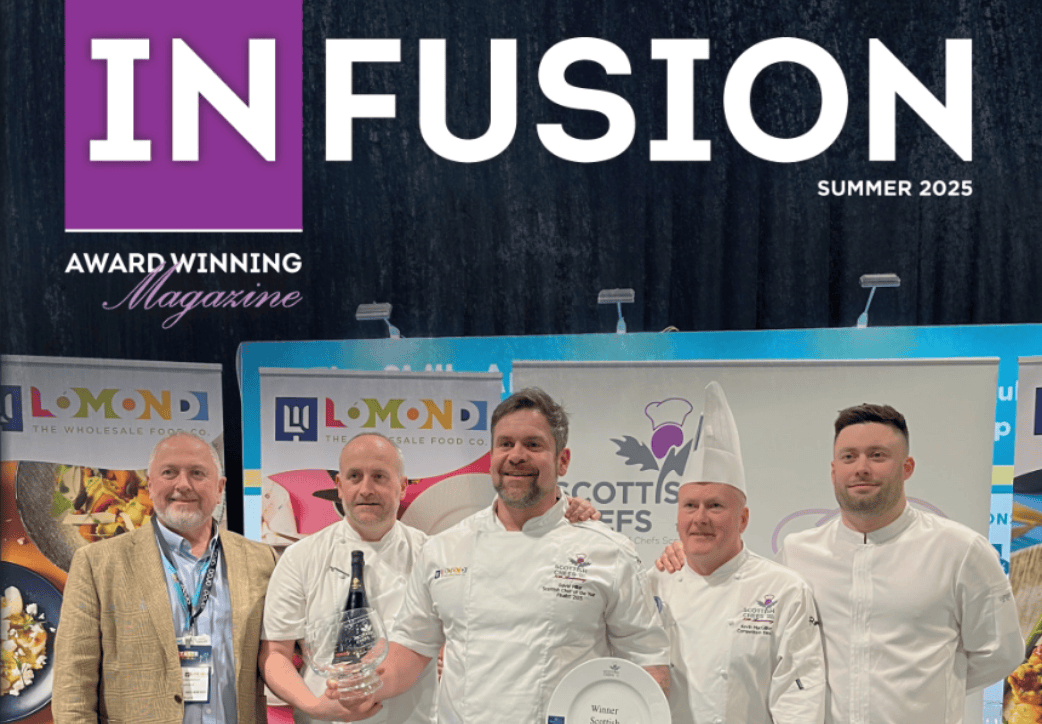
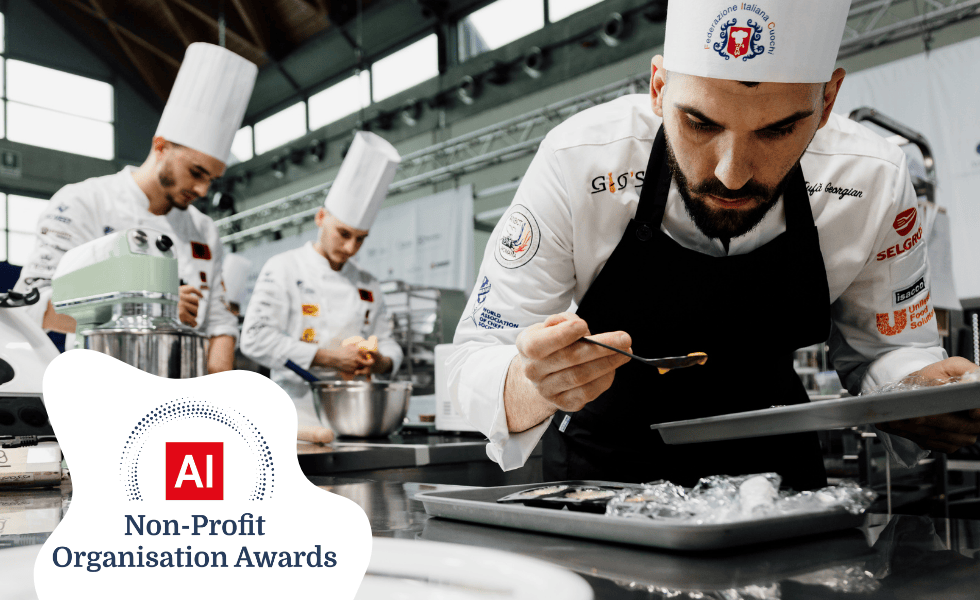
Paris, July 17 2025 – Worldchefs has been recognized with two prestigious honors from Acquisition International’s Non-Profit Awards 2025: Most Influential Culinary Profession Development Organization and the Sustainability Education Excellence Award.
Now in its fifth edition, the Acquisition International Awards celebrate outstanding non-profit organizations making a measurable impact across sectors. For Worldchefs, these accolades underscore the organization’s dedication to building a more skilled, inclusive, and sustainable future for the culinary industry.
“We’re proud to recognise those who play a part in improving this world and the lives of our fellow beings,” said Melissa Bramall, Awards Coordinator at Acquisition International. “It’s such an honour to celebrate their successes and learn from their stories. Congratulations again.”
These awards reinforce Worldchefs as a leader in the non-profit space, and elevate the organization’s reputation as a global leader in advancing culinary careers and equipping chefs with the tools to lead meaningful change. Through internationally recognized certification, educational opportunities, and initiatives like Feed the Planet, Worldchefs empowers culinary professionals at every stage.
With a network spanning 110 countries, Worldchefs’ work in sustainability, education, and professional development continues to shape the future of hospitality.
To read the full awards announcement from Acquisition International, click here.
– END –
Acquisition International launched in 2010, and has, over the years, evolved into a business title that professionals rely on to bring them the business knowledge, insight, and news they need. Each month their magazine is circulated to business leaders and key professionals, including top tier managers, investment professionals, business advisers and service providers. Acquisition International is owned by UK B2B media group AI Global Media.
The World Association of Chefs’ Societies, known as Worldchefs, is a federation made up of 110 national chef associations. A leading voice in the hospitality industry, Worldchefs carries years of history since its founding in 1928 at the Sorbonne by the venerable Auguste Escoffier.
Representing a mobilized international membership of culinary professionals, Worldchefs is committed to advancing the profession and leveraging the influence of the chef jacket for the betterment of the industry and humanity at large.
Worldchefs is dedicated to raising culinary standards and social awareness through these core focus areas:
Visit www.worldchefs.org to learn more.
Media contact:
Olivia Ruszczyk communications@worldchefs.org
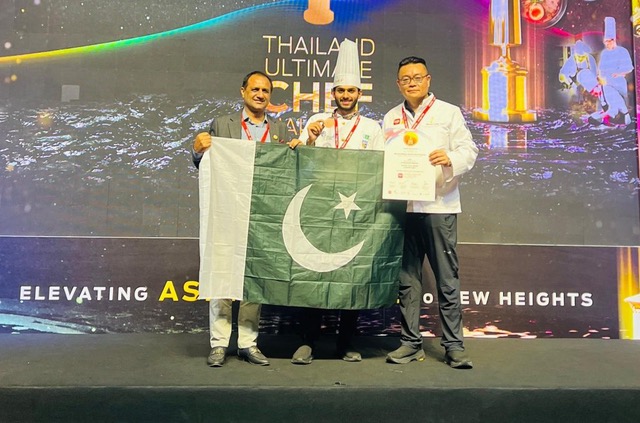
In a remarkable display of culinary talent and international competitiveness, young chefs representing Chefs Association of Pakistan (CAP) and College of Tourism and Hotel Management (COTHM) have achieved an extraordinary milestone at the Thailand Ultimate Chef Challenge (TUCC) 2025, held from May 27 to May 31, 2025.
Participating for the first time in this prestigious global culinary event, the Pakistani delegation proudly secured 14 Diploma Certificates and 5 Bronze Medals, marking a momentous achievement for the country’s hospitality and culinary education sector.
These accolades not only celebrate the individual achievements of these young chefs but also underscore the strength of CAP and COTHM’s training programs and the rising global presence of Pakistani culinary arts.
Mian Shahid Mehmood, Vice President of the Chefs Association of Pakistan, praising the team’s exceptional performance said, “Earning 14 Diploma Certificates and 5 Bronze Medals at such a challenging international culinary platform is a significant achievement. It is a proud moment for Pakistan, and it proves that our young chefs are capable of competing on a global stage.”
Their coach, Tipu Imran, Executive Chef at COTHM Johar Town, also expressed his pride in the team. “It was the students’ first time competing on such an international stage, yet they performed exceptionally well,” he said. “With this experience, they’ll continue to grow and achieve even greater success in the future.”
Fraaz Kasuri, Manager of the Chefs Association of Pakistan and team manager for TUCC 2025, praised the young Pakistani chefs, saying they are both talented and passionate. “They’ve truly earned what they worked so hard for,” he added.
While appreciating the team telephonically, Chefs Association of Pakistan President Ahmad Shafiq congratulated the students and CAP members on their outstanding performance. He said the achievement reflects the high-quality training provided at COTHM and showcases the talent and potential of Pakistani youth. “Winning bronze medals on such a tough global stage is like gold to us,” he added. “This success not only brings pride to COTHM and CAP but also highlights Pakistan’s growing presence in the international culinary arena.”
Chef Willment Leong, Organizing Chairman of the Thailand Ultimate Chef Challenge 2025 and Continental Director for Asia at WorldChefs, commended the Pakistan team on their debut performance. “It was Pakistan team’s first time participating in TUCC, and they showed great enthusiasm and potential,” he said. “They gained valuable experience this year, and I am confident they will come back stronger and achieve even better results in future competitions.”
This success marks a major milestone in CAP and COTHM’s commitment to culinary excellence, innovation, and international collaboration. The participation and victory at TUCC 2025 has set a new benchmark for aspiring chefs in Pakistan highlighting the growing recognition of Pakistani cuisine and culinary education worldwide.

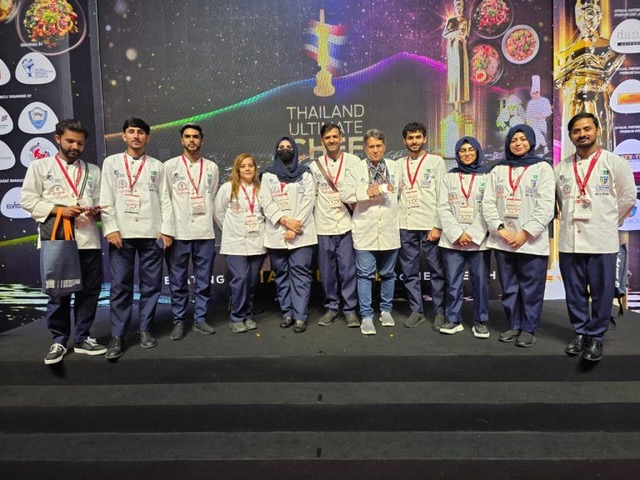


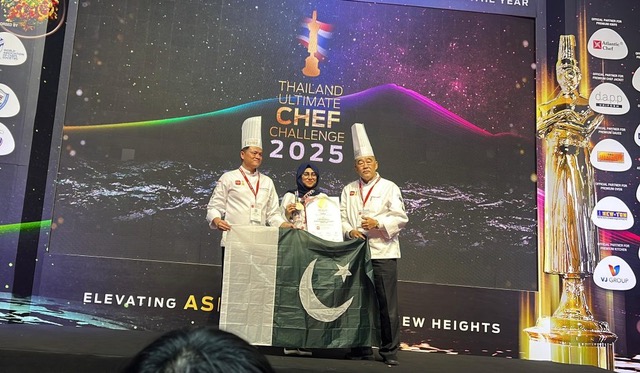
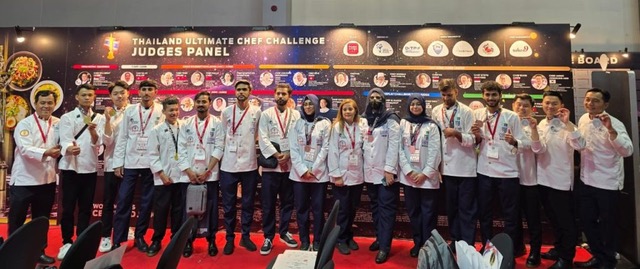
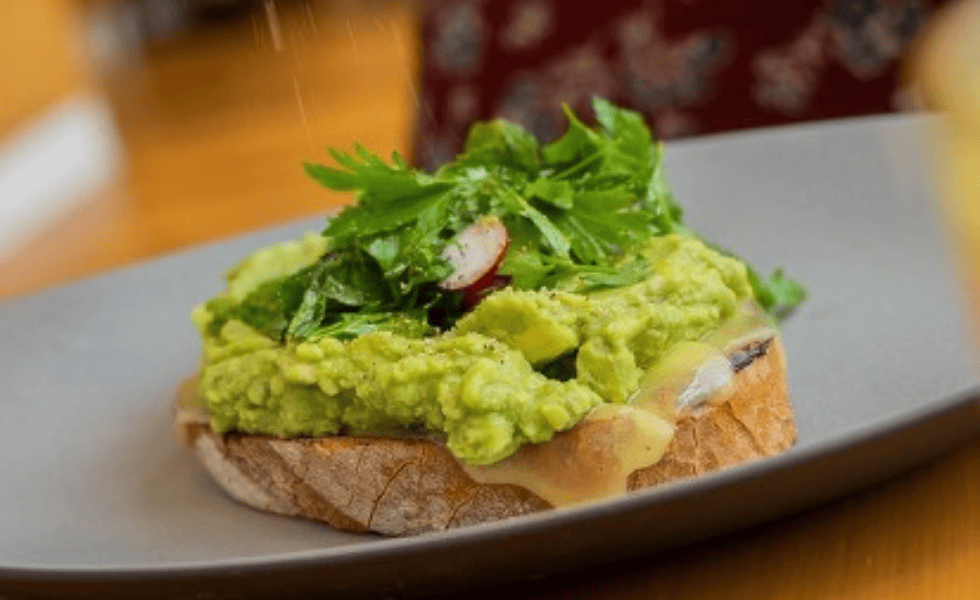
See below for recipe
Avocado Toast didn’t just pop up out of nowhere. Its origin story began long before it was an Instagram sensation and the “downfall” of millennial budgets across the nation. There are several legends about how toast smeared with avocado came about. It turns out its roots reach further than you might imagine.
The person who claims he put avocado toast on menus across the world is Bill Granger of bills restaurant in Sydney, Australia. Granger says he has no doubt that Australian cafe culture is what brought this breakfast into the spotlight. His version of avocado, lime, salt, and olive oil on toast was on the menu as early as 1993.
However, Chef Chloe Osborne of NYC’s Cafe Gitane says that she snacked on avocado toast in Australia during the 1970s, eventually bringing the tradition with her to the USA. She later added avocado toast to her Manhattan restaurant’s menu, with the earliest recorded appearance in 2006, though she claims they served it up before then. Her avocado toast really helped the trend spread across America. The Kitchen posted a copycat recipe in 2008, and since then, it’s spread and evolved across the country, with an avocado toast recipe in Gwyneth Paltrow‘s It’s All Good being hailed as another turning point for the humble breakfast item.
Avocados grow abundantly in Mexico, so it makes sense that they would have made their way to California. A New Yorker article describes a diner enjoying an avocado sandwich on whole wheat at Best Drug Stores, Inc. in Los Angeles in 1937. Even earlier, in 1931, the LA Times wrote about women enjoying avocado on toast with their coffee, hot or iced, after long days of shopping.
Outside of Los Angeles, it seems like the meal wasn’t unheard of, either. In a 1920 article for the Covina Argus, there’s a recipe for avocado on toast. More notably, The San Francisco Chronicle ran an article in 1927 suggesting that one should “Mash the flesh of the avocado and spread thickly on toast or between thin slices of bread.”
According to Rico Torres, co-chef of Mixtli in San Antonio, Texas, records of humans eating avocado date back 10,000 years ago in Puebla, Mexico, where avocados, indigenous to Mexico, were domesticated there before spreading to Central and South America. Torres says that avocado on a toasted tortilla likely preceded avocado on toasted bread.
Bread arrived in Mexico in the 1500s, along with Spanish colonizers, so it wouldn’t be too surprising if they put two and two together then. Chileans and Peruvians have a tradition of eating smashed avocado on bread, too. The dish is called pan con palta, and it’s so common it’s almost laughable to think of it as a trendy food. In Chile, fresh bread called marraqueta is smeared with mashed avocado and served for breakfast, as a snack, or with tea, a culinary tradition likely dating to the late 1800s.
Looking at the evolution of avocado toast, it seems like one thing is true. Once avocado and bread are in the same place at the same time, it becomes obvious they were meant to be together. It’s thanks to Instagram and social media buzz that the combo has become so popular today. Truth is, this snack’s at least a century old and likely many more. obvious they were meant to be together. It’s thanks to Instagram and social media buzz that the combo has become so popular today. Truth is, this snack’s at least a century old and likely many more.
Yields 4 servings
For more recipes, visit www.worldchefs.org/news.
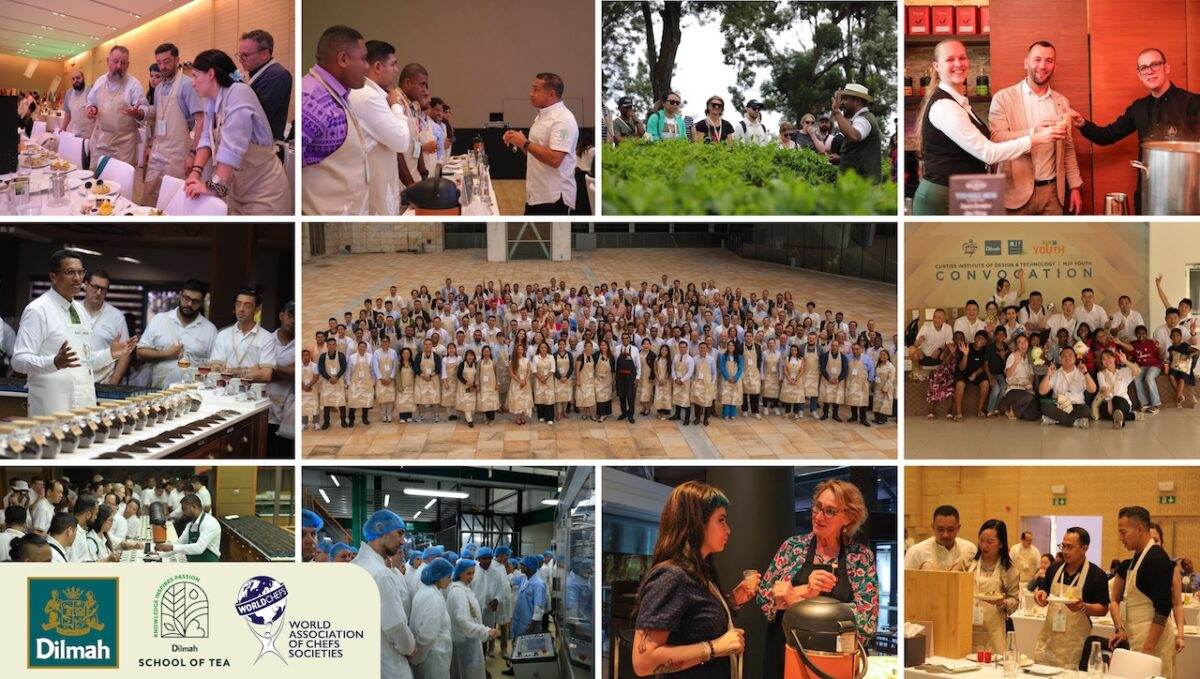
Session 90 of the Dilmah School of Tea (SOT) marked a significant milestone in professional tea education, welcoming 189 participants from 48 countries. Designed to enhance the understanding of tea in the context of food, beverage and hospitality, the session combined technical knowledge with hands-on practical experience across four full days in Sri Lanka.
The programme began with culinary demonstrations showcasing tea’s versatility in gastronomy. Renowned chef Peter Kuruvita, cheese expert Betty Koster and award-winning mixologists Tomek Malek and Alberto Pizarro led segments that integrated tea into both sweet and savoury applications, as well as innovative non-alcoholic and low-ABV beverages.
Participants then engaged in classroom-based modules covering tea and wellness, tea’s health benefits, flavour pairings, and food service trends. Led by Dilhan C. Fernando, Chairman of Dilmah Tea and supported by local and international experts, the sessions emphasised the role of tea in contemporary hospitality. Practical yet fun components included the design of personalised high tea presentations as well as tastings and sensory evaluations.
The visit included community engagement facilitated by the MJF Charitable Foundation, reinforcing Dilmah’s commitment to ethical and sustainable tea. A field visit to the Craighead Estate in Nawalapitiya offered direct exposure to the tea gardens and tea production, from handpicking to grading. The programme concluded in Colombo with visits to the Dilmah Tea Room and the factory & packaging facility. More than 5,000 cups of tea were brewed, but the value of Session 90 lay in the professional knowledge shared and the community of global culinary and mixology practitioners it helps to build.
To learn more about Dilmah School of Tea, visit https://www.dilmahtea.com/all-about-tea/school-of-tea.
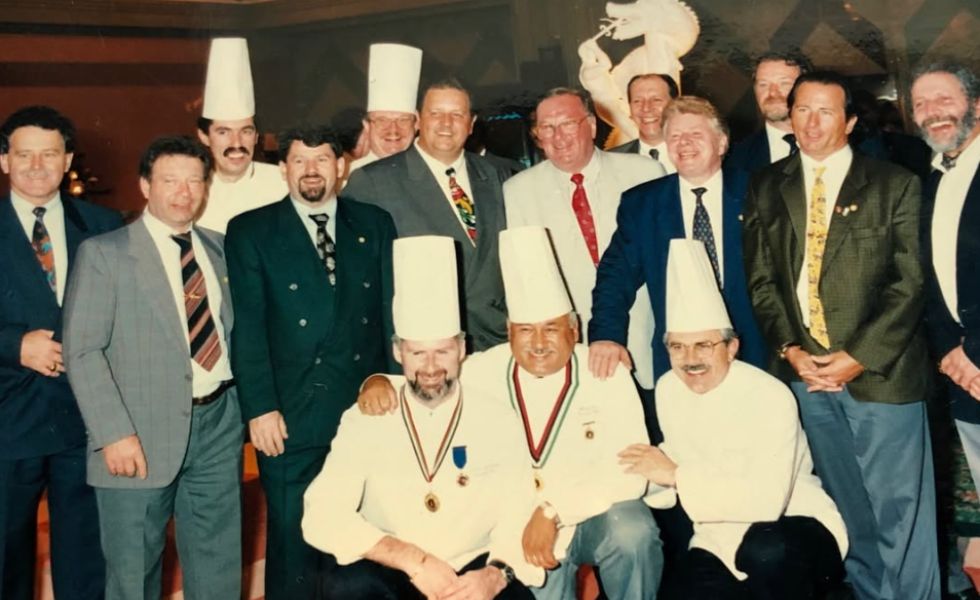
July 2, 2025 – We are saddened today to learn of the passing of an old friend of Worldchefs and the greater culinary community globally, Chef Norbert Girnth. Chef Norbert has been involved in Worldchefs and spent many years coming to the Emirates Salon Culinaire since the inception back in 1993 and was an icon judge for the competition over the past 28 editions. This endeared him to fellow judges and competitors alike. Chef Norbert had worked in some of the most iconic kitchens around the world.
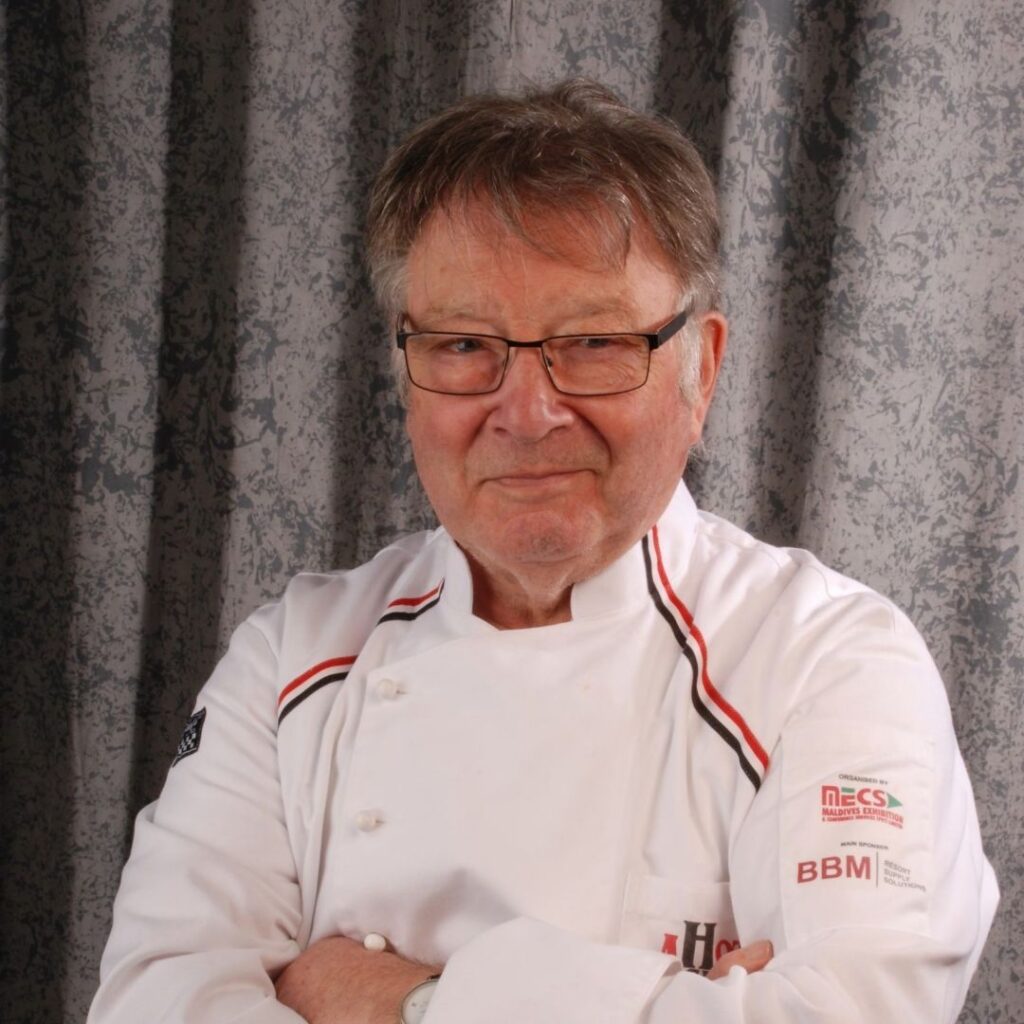
Chef Norbert is a member of the Verband der Koche Deutschland. He served his apprenticeship in a Michelin-Star restaurant in Germany and worked in Switzerland, France, Jersey, Channel Islands, and Morocco. He spent two years on the flagship of the Holland- America line: S/S Rotterdam.
Chef Norbert won more than 30 gold culinary medals during a distinguished career before retiring from active competition to take up judging. After some seminars about judging, he was a member of judging teams in Manila, Bangkok, Singapore, Dubai, Chicago, Iceland, Kuala Lumpur, Strasbourg, Basel, Gent, and Johannesburg. He was twice Host-chef for the national team of Australia during the cooking Olympics in Frankfurt and twice as a judge for the cooking Olympics in 1996 in Berlin and in 2000 in Erfurt.
Following two years studying at the Heidelberg Hotel – and Management school, he has, since 1970, been Chef-Patron at the restaurant that has been owned and operated by his family for the past two-hundred years.
Norbert’s smile and stories would captivate us all. To listen to the history of his culinary journey was inspirational.
To Norbert’s wife, Uschi, and his son – also a chef – Leif, we offer our sincerest condolences and thank them for sharing him with us over these many years. We are thankful to have met you both in friendship due to Norbert’s friendship to us all.
Rest in peace our friend.
Thoughts and prayers from from all chefs of the World Association of Chefs Societies.

See below for recipe
Traditional dolma is made with meat, rice, and a mixture of herbs rolled into grape leaves. There is also a variety of dolma made with a filling of nuts. Its name comes from the verb ‘doldurmaq’, meaning ‘to stuff’ in Azerbaijani. The ingredients vary from region to region and depending on the time of year. For example, in summertime, stuffed aubergines or tomatoes are also considered dolma dishes.
For more recipes, visit www.worldchefs.org/news.
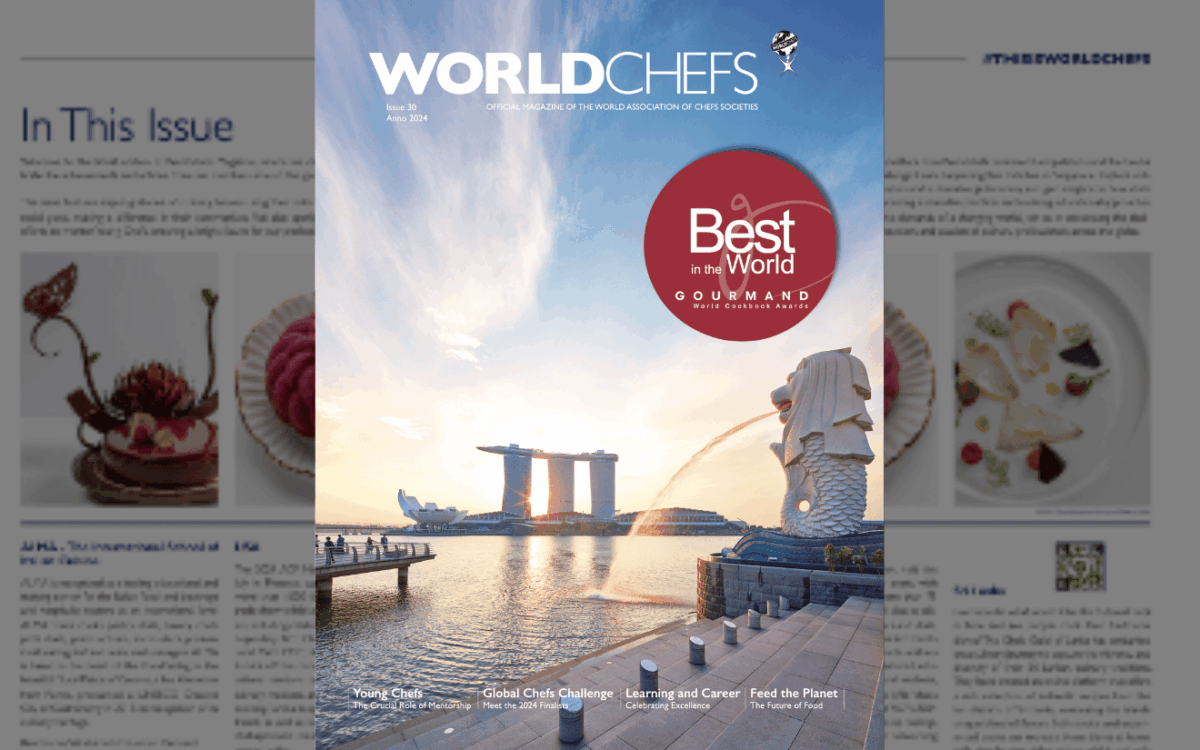
Portugal, 21 June 2025 – Worldchefs Magazine, by World Association of Chefs Societies, was named Best Food Magazine in the World at the Gourmand Awards, during the Cascais World Food Summit, a prestigious event that took place from June 18-21 in Portugal.
The announcement was made on stage at the Estoril Congress Centre by Edouard Cointreau, President and Founder of the Gourmand Awards, who praised the work for its depth and cultural significance:
“Congratulations to Ragnar Fridriksson and the entire Worldchefs team on the release of Worldchefs Magazine Issue 30—a powerful celebration of the global culinary community’s commitment to innovation, sustainability, and professional growth. This milestone edition, launched in the lead-up to the Worldchefs Congress 2024 in Singapore, beautifully captures the spirit of mentorship and inclusivity that is shaping the future of gastronomy. With its thoughtful stories and global perspectives, the magazine serves as a vital reference point for the collaborative energy that defines Worldchefs and its expansive international network.”
Founded in 1995, and with participation from over 200 countries, the Gourmand Awards are the only international competition dedicated to publications on food and drinks cultures. The competition is free and open to all languages. Each year, Gourmand organizes a global symposium in a location of notable gastronomic relevance, bringing together leading voices from the diplomacy, culinary, publishing, and cultural sectors.
Today, Worldchefs Magazine, with 31 published editions, continues to celebrate the unity and progress driving the global culinary community forward. It’s a tribute to the legacy of chefs past and present, and a snapshot of the many ways Worldchefs’ members are leading with purpose and passion. To read our latest edition, click here.
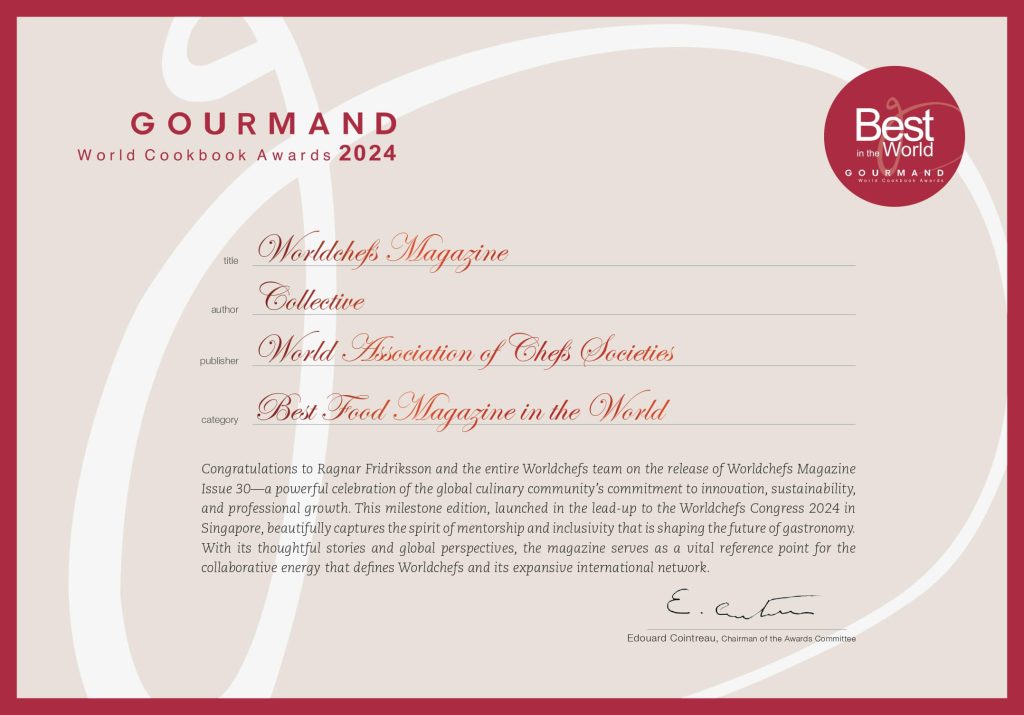
– END –
Beyond the accolades, the Gourmand Awards offer a platform for sharing culinary knowledge and fostering connections within food & tourism professionals. These awards not only spotlight outstanding cookbooks, culinary magazines, and food-related media from across the globe, but also underscore the importance of culinary storytelling and its impact on food culture worldwide.
The World Association of Chefs’ Societies, known as Worldchefs, is a federation made up of 110 national chef associations. A leading voice in the hospitality industry, Worldchefs carries years of history since its founding in 1928 at the Sorbonne by the venerable Auguste Escoffier.
Representing a mobilized international membership of culinary professionals, Worldchefs is committed to advancing the profession and leveraging the influence of the chef jacket for the betterment of the industry and humanity at large.
Worldchefs is dedicated to raising culinary standards and social awareness through these core focus areas:
Visit www.worldchefs.org to learn more.
Media contact:
Olivia Ruszczyk communications@worldchefs.org
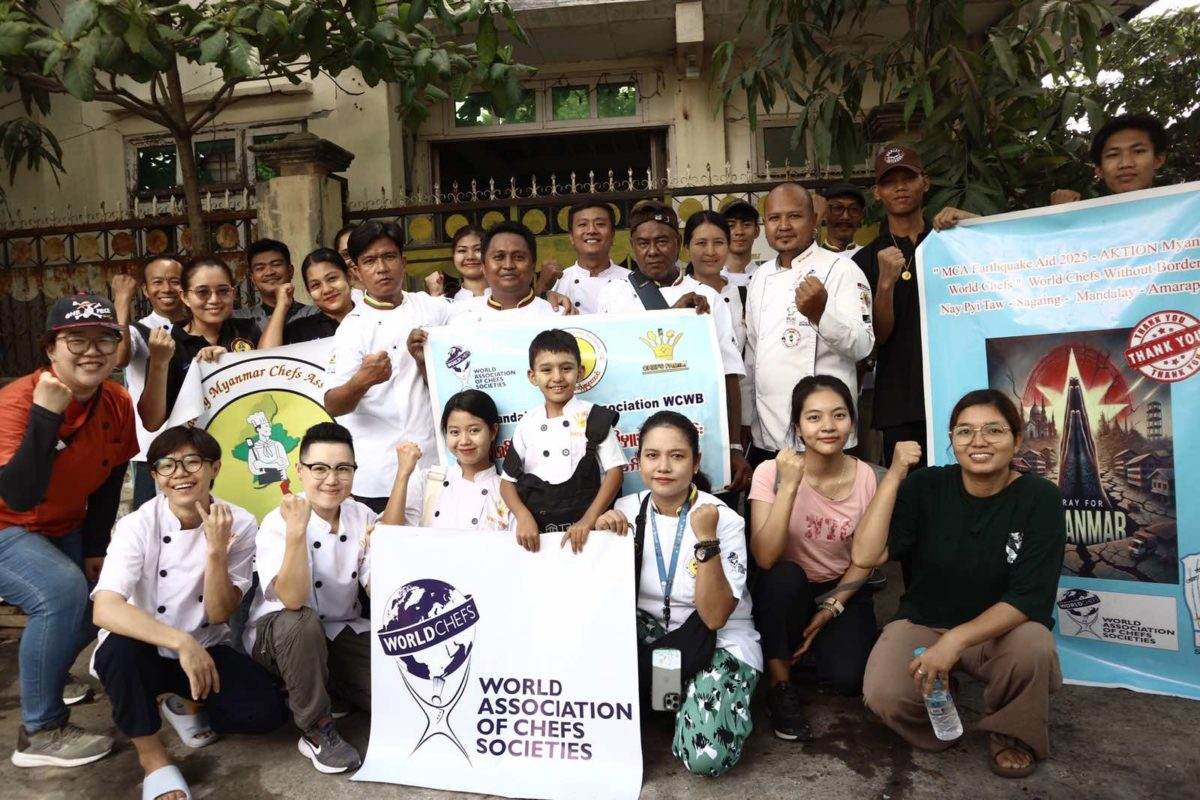
World Chefs Without Borders, Worldchefs’ humanitarian arm, has successfully raised funds to go directly to supporting Myanmar relief efforts, providing aid and assistance since the devastating earthquakes last month.
Paris, 26 June 2025 – When a series of powerful earthquakes struck Myanmar at the end of March, the devastation was immediate and widespread. Homes were destroyed, communities displaced, and access to food, clean water, and medical care severely impacted. In the face of this crisis, Worldchefs and our humanitarian arm, World Chefs Without Borders (WCWB), responded without hesitation.
From the earliest moments of the disaster, our global chef community united to deliver support where it was needed most. Through coordinated fundraising efforts, generous donors, and on-the-ground action, we have collectively raised a total of €105,000 in aid – a testament to the power of culinary solidarity.
While funds were mobilized globally, members of our community were on the ground across Myanmar. The Myanmar Chefs Association (MCA), in close coordination with WCWB, has been actively leading relief operations in the earthquake’s hardest-hit regions.
MCA Secretary Ma Khet Khet and local WCWB chefs traveled to the epicenter in Sagaing, where they prepared and served thousands of meals to displaced families. Chefs stayed overnight in the region, ensuring continuous support and laying the groundwork for incoming humanitarian missions.
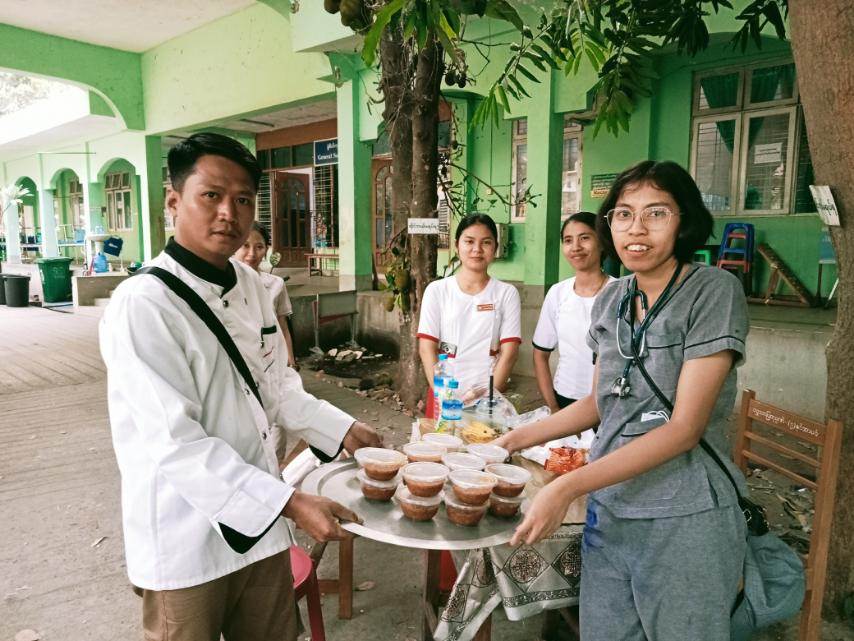
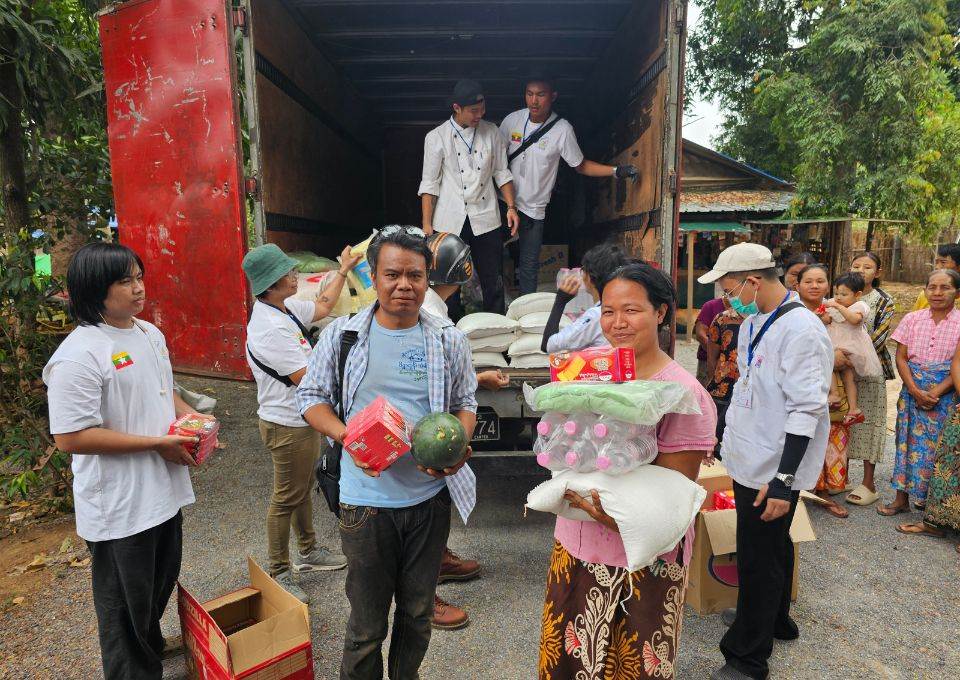
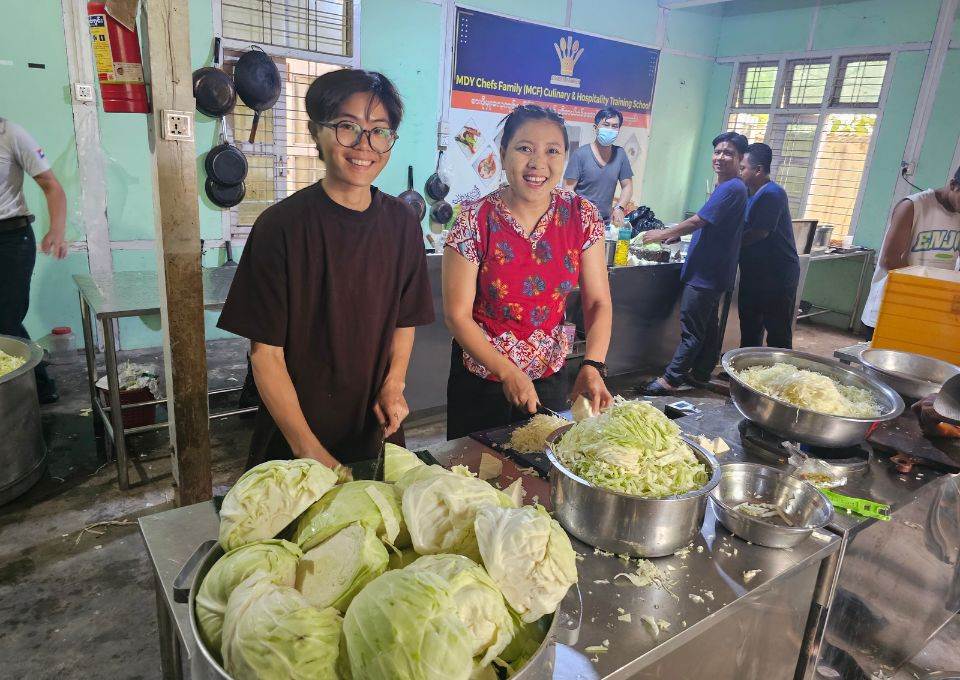
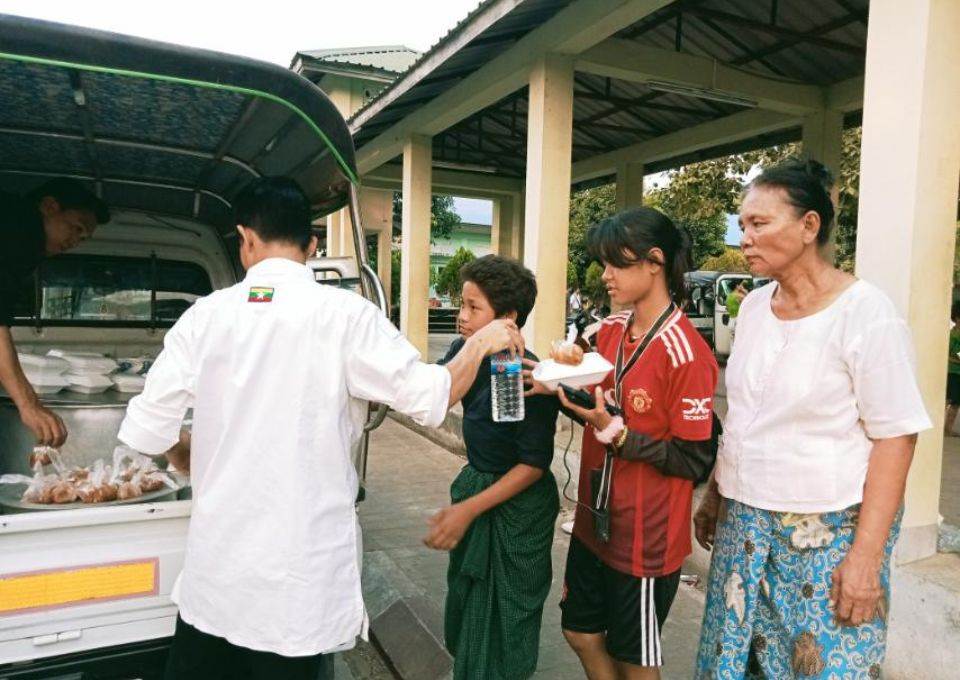
The next phase of aid brought food, medical supplies, clean drinking water, and shelter back through Nay Pyi Taw to Sagaing, Amarapura, Mandalay, Plate, and Inwa.
Key partners supporting the mission include Mr. Suki of Inya Lake Hotel, Moona and Renato of Chaîne des Rôtisseurs, who helped organize the next wave of aid trucks and buses.
Thanks to international allies including South Korea, MCA was able to access a water purification system. Tents for displaced families were also made available. Aid continued to arrive including air cargo containing rice, tinned fish, and medical supplies.
The South African Chefs Association assisted in these efforts, collecting donations during their Lunch with a Cause event.
China Cuisine Association also made major contributions. In addition to on the ground work, they collected donations, raising approximately 43,000 euros to directly support relief efforts. Read more here.
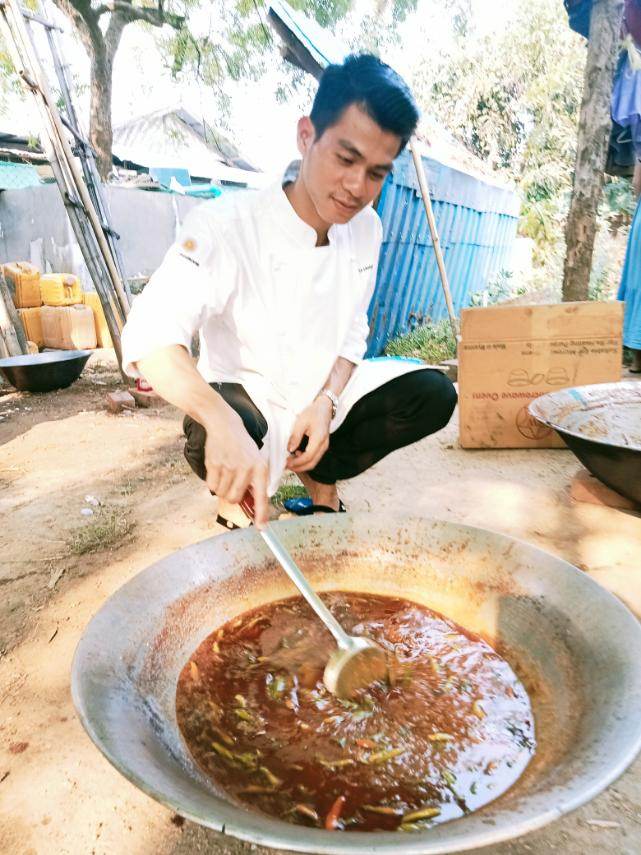
Worldchefs’ members have also stepped in to address long-term health through emergency food. They developed a high-calorie, vegetarian curry designed for local rice, using ingredients sourced entirely from the earthquake-affected region. The result: nutritious, culturally appropriate meals with a minimal CO2 footprint, supporting, the people, the local economy and environmental sustainability.
“Thank you to all donors for Myanmar people – Thank you for all global aid support.”
– Chef Oliver, President of the Myanmar Chefs Association
Echoing the words of Chef Oliver, we’d like to extend a heartfelt thank you to all of the generous donors who have supported relief efforts for Myanmar, including:
Chefs Association of Pakistan
Japan Chefs Association
China Cuisine Association
Penang Chefs Association
Taiwan Chefs Association
Chefs Association of Nepal
Cyprus Chefs Association
Icelandic Chefs Association
Emirates Culinary Guild
Syrian Culinary Guild
ACP Indonesia
Dipartimento Solidarieta Emergenze
South African Chefs Association
Singapore Chefs Association
& many more!
The impact of your support is real, visible, and ongoing. From meals served to lives sheltered, every donation has made a difference.

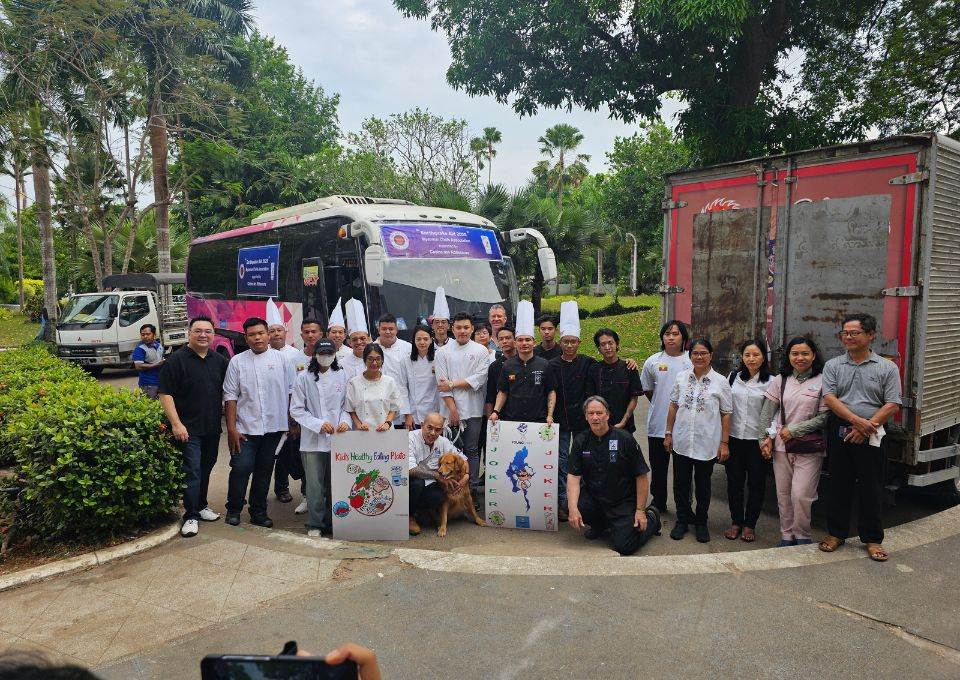


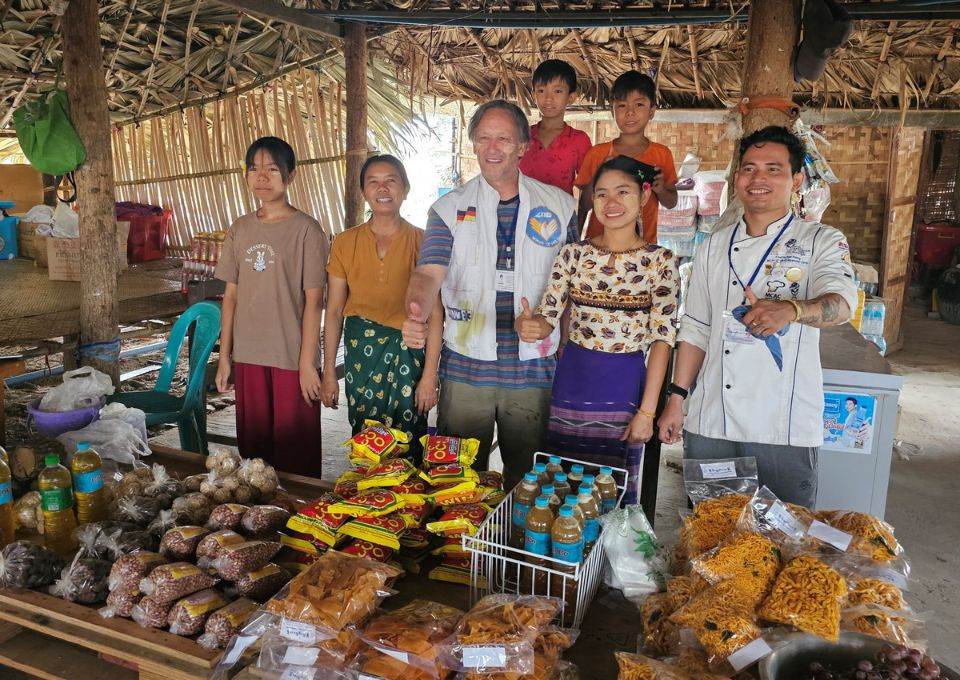
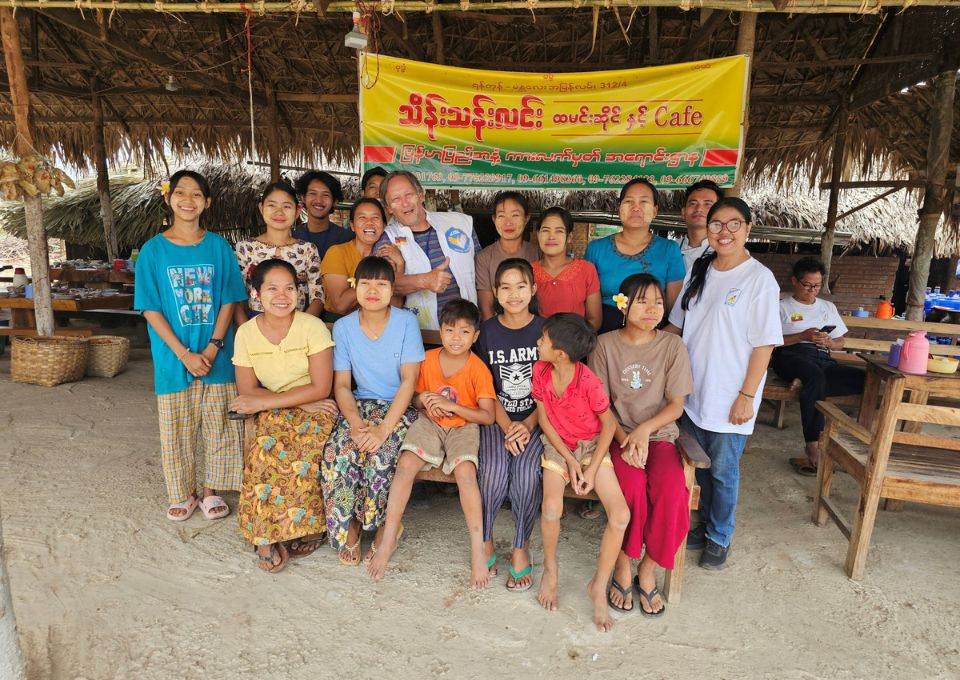
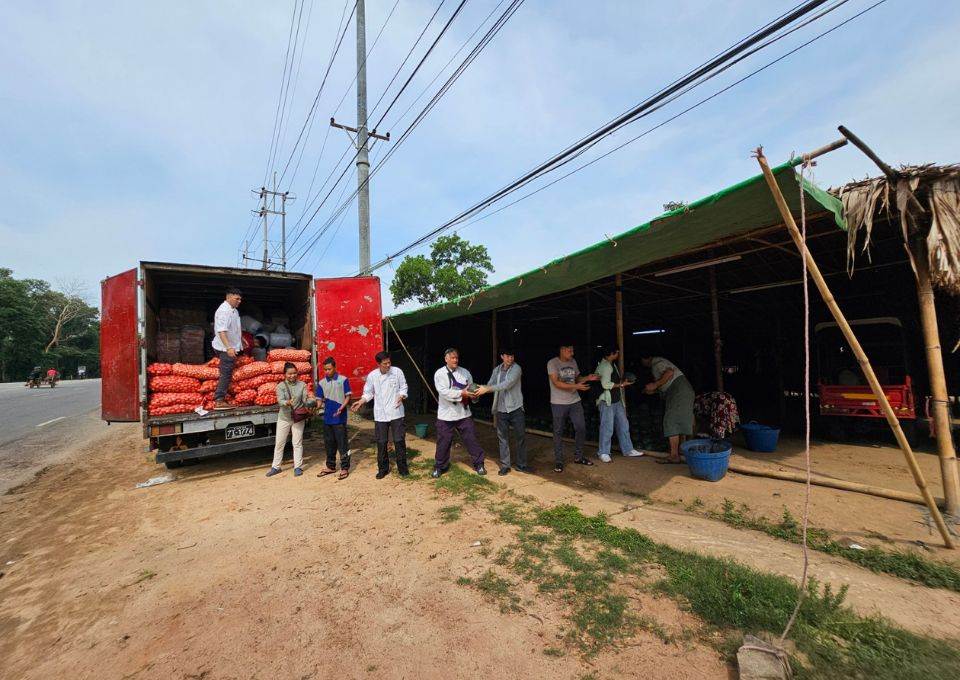
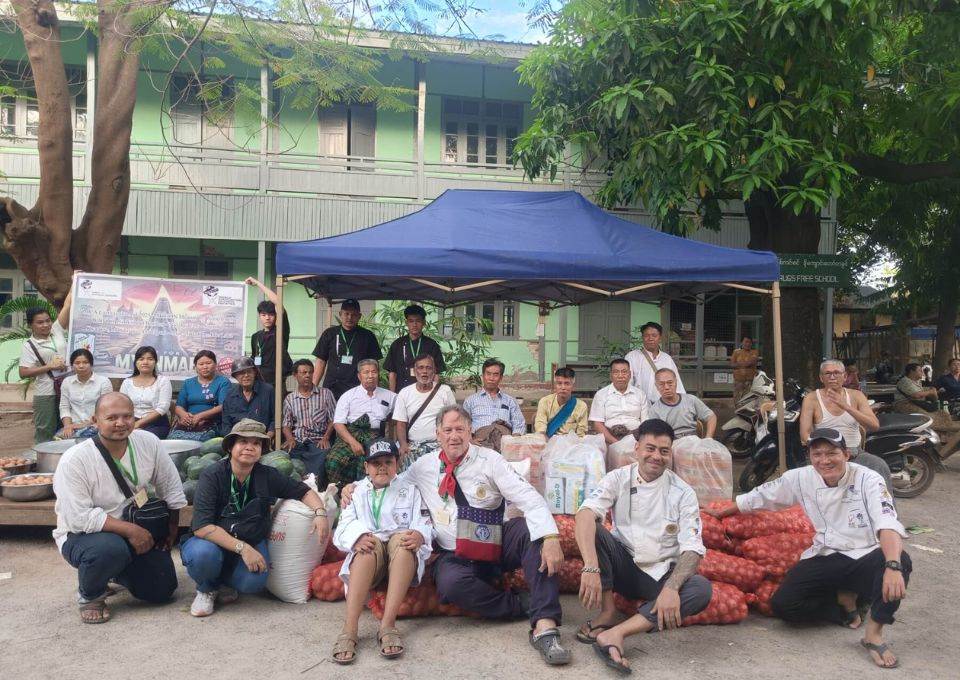
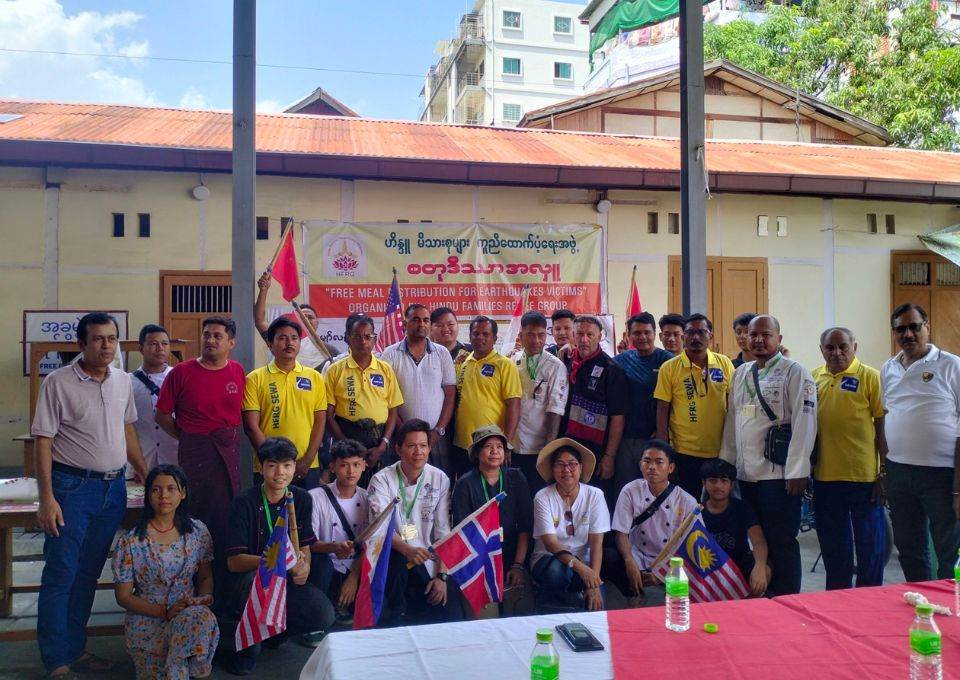
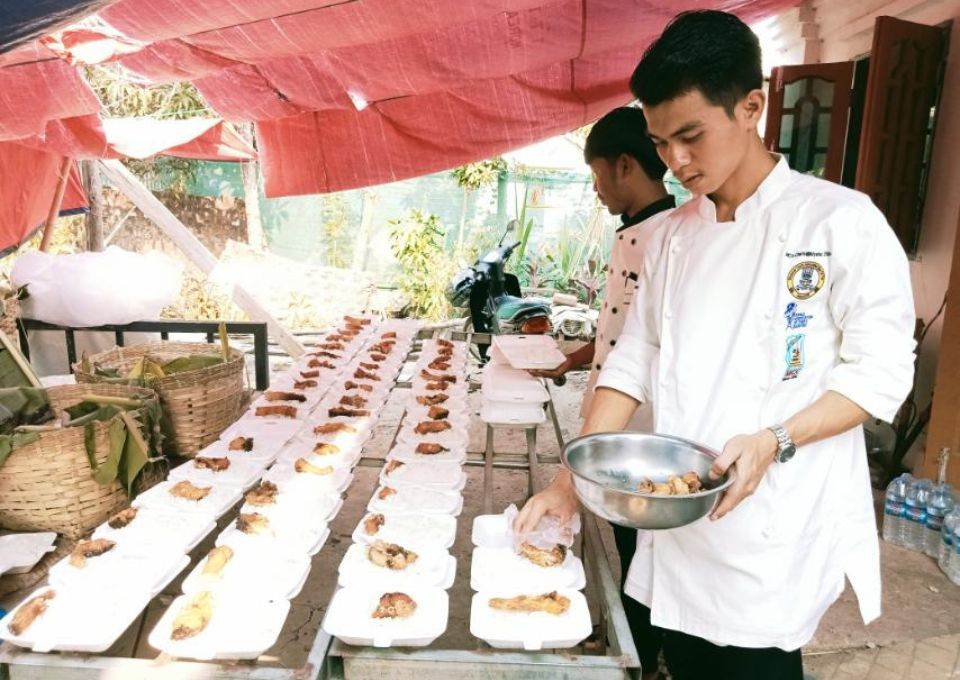

– END –
The World Association of Chefs’ Societies, known as Worldchefs, is a federation made up of 110 national chef associations. A leading voice in the hospitality industry, Worldchefs carries years of history since its founding in 1928 at the Sorbonne by the venerable Auguste Escoffier.
Representing a mobilized international membership of culinary professionals, Worldchefs is committed to advancing the profession and leveraging the influence of the chef jacket for the betterment of the industry and humanity at large.
Worldchefs is dedicated to raising culinary standards and social awareness through these core focus areas:
Visit www.worldchefs.org to learn more.
Media contact:
Olivia Ruszczyk communications@worldchefs.org
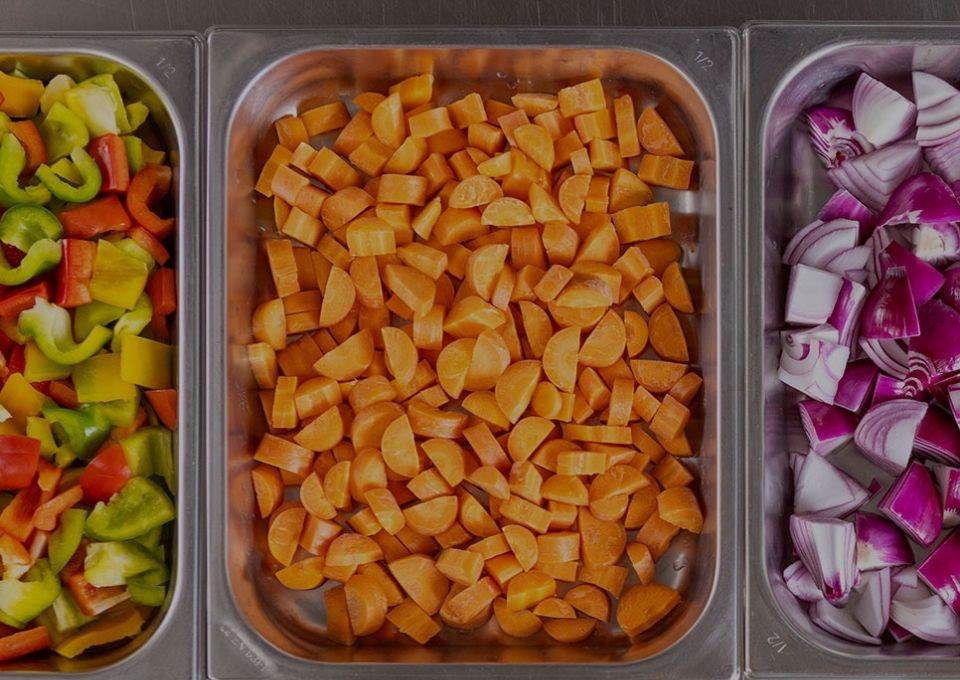
Modern commercial kitchens are focused on two key tenets to ensure optimum output.
The first is health and safety, with a drive to protect the safety and ease of work for kitchen staff, as well as the health and well-being of patrons. The goal? To inspire action to help prevent, detect, and manage foodborne risks.
The second is ensuring sustainability in restaurants, with the goal of operating kitchens in a streamlined way, reducing food waste, energy use and costs.
For today’s restaurants, both go hand in hand. With the right appliances, you can address these two important elements of a modern commercial kitchen. You can create a streamlined work environment for staff through ergonomic design while also working to ensure high food quality, all while ensuring you do your best to protect the environment.
Electrolux Professional Group always designs commercial kitchen equipment with both health and safety and restaurant sustainability in mind. One key example is the SkyLine Cook and Chill, which enables the pre-preparation of large batches without compromising quality.
The SkyLine Cook and Chill concept safely preserves items for later consumption, firstly cooking food in the SkyLine Combi Oven, then chilling it in record-breaking time in the SkyLine Blast Chiller. It’s a process that helps your restaurant align with strict food safety regulations, while also cutting food costs and extending shelf-life of food items, all through the use of eco-friendly refrigerants that offer minimal climate impact, such as R290 propane.
Unlike traditional food preservation, the SkyLine Cook and Chill concept maintains the essential characteristics of food, including texture, appearance and nutritional value, all of which are rated at the same level as freshly cooked food.
Blast chilling works to quickly bring food temperature down to protect against the growth of potentially harmful bacteria. It takes food quickly out of the “danger zone” – that’s the region between +8 °C and +68 °C (46.4 °F and 154.4 °F) where bacterial growth is at its most rapid. And with their speedy chilling function, Electrolux Professional commercial SkyLine Blast Chillers and Freezers all work in compliance with HACCP and food safety regulations.
Electrolux Professional Cook and Chill process has a significant impact on the shelf-life of food and has been shown to help restaurants reduce waste. With attention to detail and by following Electrolux Professional’s best practices and maintenance guidelines, you can significantly improve your cooking workflows and ensure maximum efficiency and safety in the kitchen. It means you can align your restaurant sustainability efforts with a focus on reducing losses across the board – including food, energy and money.
Be sure to familiarize yourself with the features of this powerful commercial kitchen equipment. That way, you’ll develop a better understanding of the full potential of the brand’s innovative SkyLine Cook and Chill solution, for optimal waste management and cost-cutting.
SkyLine Cook and Chill helps to improve sustainability in restaurants with refrigerants that comply with the most stringent global standards. The refrigerant gas R290, otherwise known as propane, is an eco-friendly refrigerant with a global warming potential (GWP) of 3, offering minimal climate impact. The other refrigerant used is CO2, a completely natural substance that’s fully climate-friendly, with a GWP of 1 – the lowest of all refrigerant gases.
In addition, Electrolux Professional’s commercial kitchen equipment meets the highest standards for reducing energy consumption, with a range of ovens meeting the ENERGY STAR certification – a trusted symbol for energy efficiency.
The best modern kitchen appliances help streamline operations and support workers, ensuring the highest health and safety standards while also supporting sustainability. Electrolux Professional’s SkyLine Cook and Chill are the only commercial kitchen equipment in the world to achieve a four-star rating for ergonomics and ease of use. Improved ergonomics can have a range of benefits for your business, such as:
Commercial kitchen equipment with user-friendly interfaces and smart designs help support smooth workflows, reducing the time it takes to onboard staff and increasing efficiency.
Ergonomics effectively reduces the risk of restaurant staff developing repetitive strain injuries. As ergonomic design focuses on simplifying the kitchen experience, it also acts to reduce fatigue, leaving staff more focused and less prone to accidents.
With a reduction in repetitive movements in poorly designed workspaces, ergonomic kitchen equipment helps to maintain a healthy workforce and reduce the number of staff absences. An ergonomic blast chiller reduces sick leave by 75 percent*.
Ergonomic design streamlines kitchen workflows, improving performances across the boast while boosting staff morale and mental health. An ergonomic blast chiller means a 25 percent increase in productivity for your kitchen*.
The SkyLine Cook and Chill improves workflow and efficiency in any kitchen. Each chill cycle has been shown to save 47 minutes on average**, enabling you to better manage your time and increase overall performance. You can even monitor the status of your blast chiller from anywhere with SkyLine Cook and Chill’s intuitive touch interface, while the SkyLine Combi Ovens and Blast Chillers are able to communicate seamlessly thanks to their innovative technology.
Electrolux Professional SkyLine Cook and Chill solution enables you to benefit from the efficiency of large batch preparation, making your restaurant more sustainable and streamlined while enhancing health and safety standards.
By investing in next-generation technology like Electrolux Professional SkyLine Cook and Chill solution, you can make your restaurant a benchmark for health and safety, while catering to a new era of sustainability.
* Ergonomic interventions can reduce musculoskeletal disorders (WMSDs) by 59%, with an average decrease of 75% in sick days and a 25% increase in productivity.” – Dr Francesco Marcolin, CEO of ErgoCert (European Certifed Ergonomist – EUR.ERG.).
** Calculation based on a 10-hour working day with SkyLine ChillS 50/50 kg, data in accordance with Commission Regulation EU 2015/1095.
NEWSLETTER
| Cookie | Duration | Description |
|---|---|---|
| cookielawinfo-checkbox-analytics | 11 months | This cookie is set by GDPR Cookie Consent plugin. The cookie is used to store the user consent for the cookies in the category "Analytics". |
| cookielawinfo-checkbox-functional | 11 months | The cookie is set by GDPR cookie consent to record the user consent for the cookies in the category "Functional". |
| cookielawinfo-checkbox-necessary | 11 months | This cookie is set by GDPR Cookie Consent plugin. The cookies is used to store the user consent for the cookies in the category "Necessary". |
| cookielawinfo-checkbox-others | 11 months | This cookie is set by GDPR Cookie Consent plugin. The cookie is used to store the user consent for the cookies in the category "Other. |
| cookielawinfo-checkbox-performance | 11 months | This cookie is set by GDPR Cookie Consent plugin. The cookie is used to store the user consent for the cookies in the category "Performance". |
| viewed_cookie_policy | 11 months | The cookie is set by the GDPR Cookie Consent plugin and is used to store whether or not user has consented to the use of cookies. It does not store any personal data. |